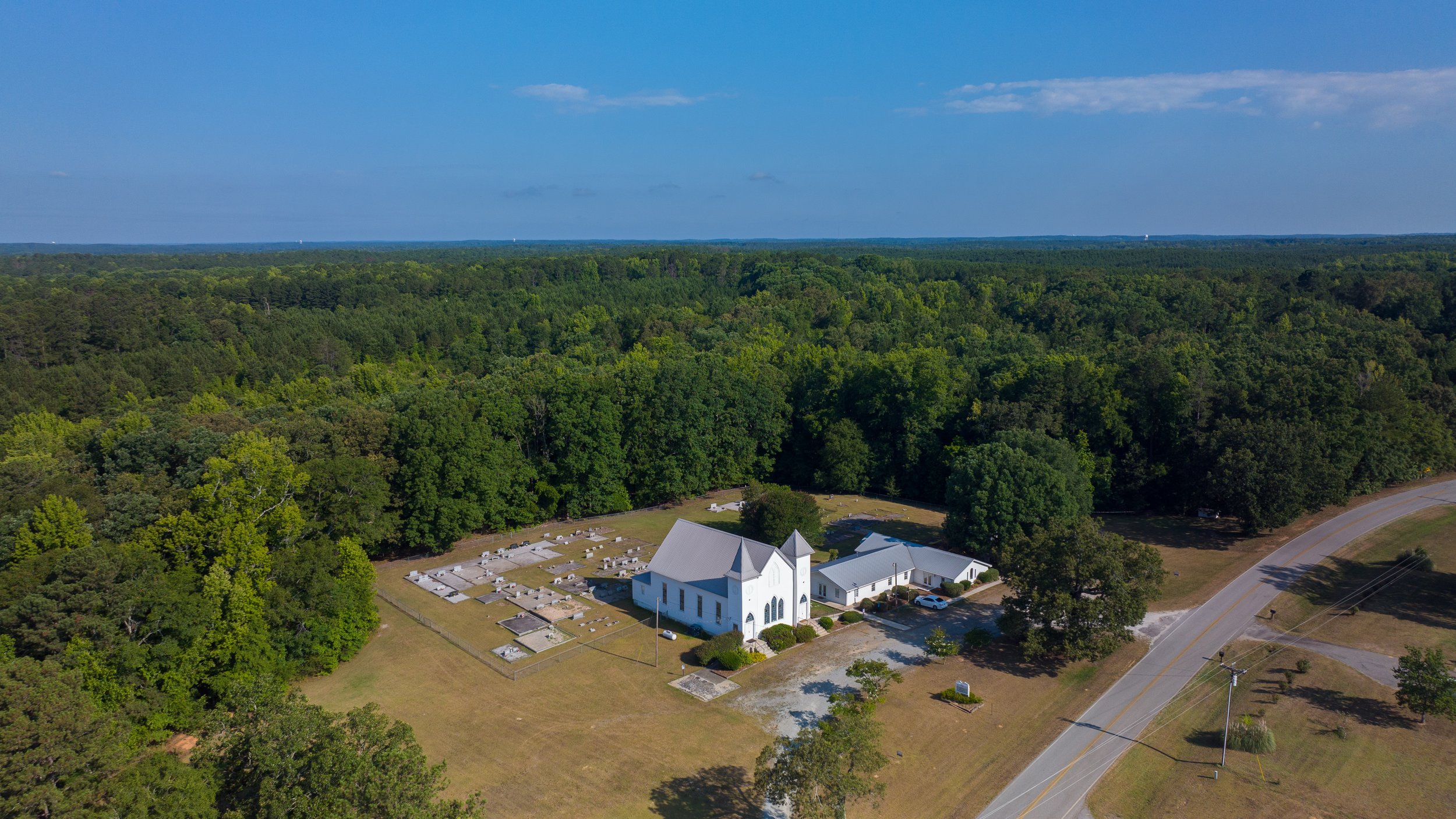
Who We Are…
Our History
Founded in 1786, Liberty is one of the oldest Methodist churches in Georgia. The history of Liberty is something in which we take great pride and we continue to build on it today. Even though we have added a Sunday School/Fellowship building, made minor improvements, and modernized a few features, our 1903 sanctuary, with its twin spires pointing heavenward, still stands today.
Because of our historic significance, the Emory School of Theology has made a virtual historic walkthrough of our campus. For more information click here.
Our Community
Liberty has a long tradition of community service, fellowship, and supporting both our congregation and local ministries. We have lunch together after service on the first Sunday of every month, regular events that raise money and provide support for those in need, and wonderful family-oriented celebrations that are fun for all ages.
The History of
Liberty
It All Started in 1786
Shortly after the close of the American Revolution. There were only nine churches in the Georgia backcountry – three Lutheran, two Presbyterian, one Congregationalist, three Baptist, and no Methodist. In 1786, two young Methodist ministers, Thomas Humphries and John Major, came to Georgia to organize the first Methodist Circuits. Among the early converts of Humphries and Major was John Bush and, with the help of others, he erected a ‘brush arbor’ at what was then called “Crackers Neck”.
Great Revivals Were Held
and out of great revivals grew a Methodist church called 'Liberty Chapel.' Organized in Greene County, Liberty Chapel was one of the first, if not the first, Methodist Church in Georgia. The name Liberty was likely derived from the fact that so many of the early settlers in the area were veterans of the American Revolution and members of the "Sons of Liberty". Liberty Chapel became the community center for periodic camp meetings and conferences where people came from miles round to have a week of worship and fellowship.
The Reverend James Jenkins
Was a circuit preacher of the Washington Circuit which included Greene, Taliaferro, Wilkes, Lincoln, Elbert, Hart, Franklin, Madison, and Oglethorpe counties. In his journal book entitled "Experiences, Labours, and Sufferings of Reverend James Jenkins (circa 1842), of the South Carolina Conference", Jenkins writes in 1797, "At one of our two meetings held at Liberty Chapel, near Greensboro, brother Enoch George stood in the door (the house not being large enough to hold one half the congregation) and preached a moving, melting sermon, so much so, that none of the preachers would open their mouths after him."

Reverend James Jenkins Journal
it appears that Liberty Chapel was a house and had a door in the year 1797 - two years before Bishop Francis Asbury's visit in 1799. Therefore, if Liberty Chapel had a house of worship in 1797, it is reasonable to suppose that an organized church had existed for some years prior to that date. It may have been a "brush arbor" originally, but it was a duly erected and duly organized house of worship before 1797. Liberty Chapel and only two other churches, a Baptist and a Presbyterian, were established in Greene County prior to the year 1800.
The Bishop Francis Asbury
as one of the stalwarts of early Methodist history, preached at Liberty Chapel on multiple occasions; one of which was on December 25th, 1806, to dedicate a new church building, mentioning that it was the second on the site. The new building, measuring thirty feet by fifty feet, was located a short distance back from the present church location. On July 27th, 1827, Reuben Smith, an American Revolutionary soldier, deeded 7.14 acres to the Liberty trustees and is the site on which the Liberty campus and cemetery now stand. Mr. Smith died February 14th, 1836, and is buried a short distance behind the present church cemetery on private land.
At the End of the 19th Century
the congregation felt that a new church building was needed so construction began in 1900. Sam P. Turner, the church treasurer at the time, did not believe in “going into debt”. With this principle in mind, construction began in pieces. When funds were available work would be done. When funds ran out work stopped. This "pay as you go" method delayed construction; but when the job was completed in 1903, the church building which still stands today was debt-free.
Improvements Have Been Made
throughout the years including three Sunday School rooms added at the rear of the church, new pews replaced the old ones which changed the sanctuary from two side aisles to one center aisle, a fellowship building erected, central heat and air system installed, perpetual care of the cemetery initiated, beautiful stained-glass windows installed, vinyl siding replaced the wood siding plus many others. These improvements and continuous care show the esteem which all members hold in their hearts for old Liberty Church. May she continue to be a living and growing beacon to God in our community.










